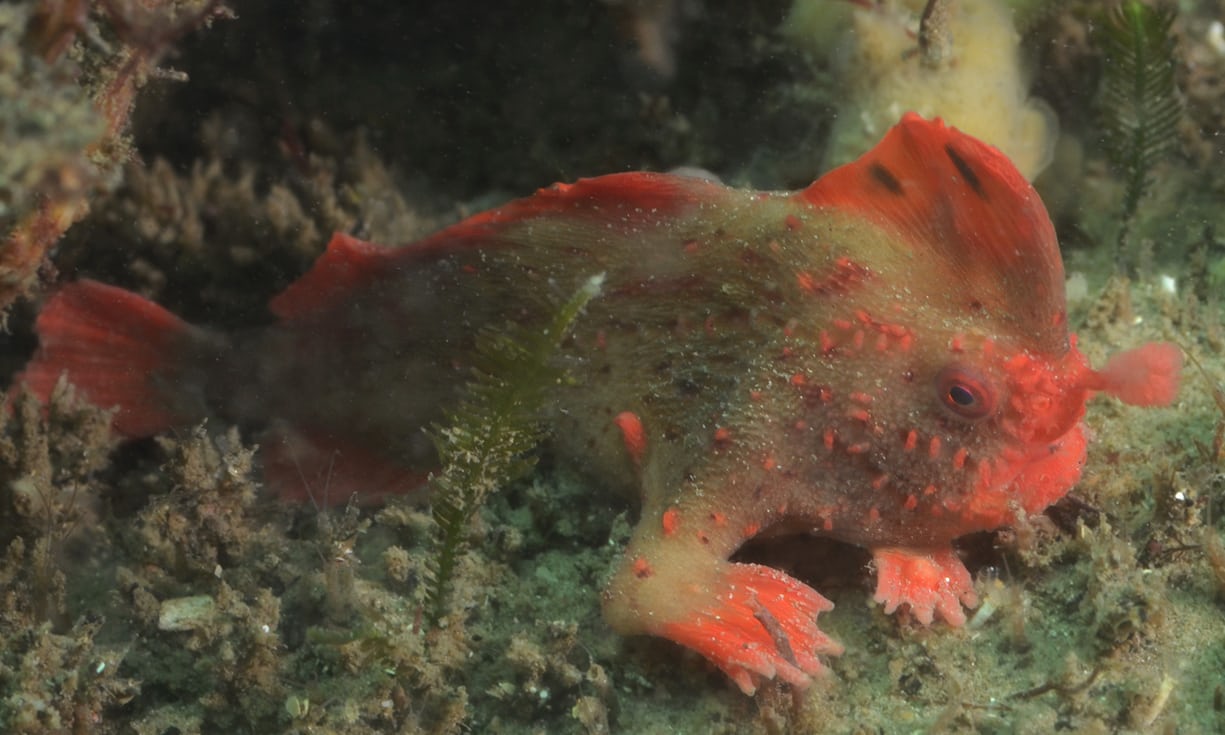
New population of red handfish discovered, doubling its numbers
A remarkable find off the coast of Tasmania has more than doubled the known population of an incredibly rare species of red handfish known as Thynnichthys politus.
First tipped off by a member of the public, seven divers from the Institute of Marine and Antarctic Studies (IMAS) went in search of the red handfish, which was thought to only exist near a reef in Frederick Henry Bay near Southeast Tasmania.
The divers discovered several individual new handfish not previously accounted for near the reef at two different sites, which led the team to believe that there were 20 to 40 more fish in the species than thought, double the current population.
It was almost a lost cause for the diving team, as their search mission using GPS coordinates handed down from someone else yielded no results at first.
“We were diving for approximately three and a half hours, and at about the two-hour mark we were all looking at each other thinking this is not looking promising,” team diver Antonia Cooper told The Guardian. “My dive partner went to tell the other divers that we were going to start heading in, and I was half-heartedly flicking algae around when, lo and behold, I found a red handfish.”
Red handfish get their name their unique modified fins which almost resemble hands, and the handfish propels himself by “walking” on the fins.
The rare and endangered species was thought to be nearly extinct, with only 20 to 40 remaining until the recent discovery. Habitat degradation and low breeding rates are to blame for the species’ low numbers.
However, now with its bolstered population numbers, researchers are reconsidering a breeding program that would help increase the handfish’s population and bring it back from the verge of extinction.
Previously, a captive breeding program that would help ensure the species’ continued survival was out of the question because of such low numbers.
“It was considered too risky to remove any egg masses or individuals because it could be the last population,” said Rick Stuart-Smith, IMAS scientist. “There’s going to be a re-discussion (about breeding).”
—
By Kay Vandette, Earth.com Staff Writer
Image Credit: Antonia Cooper/University of Tasmania












